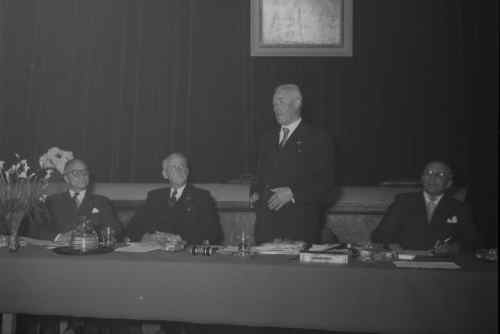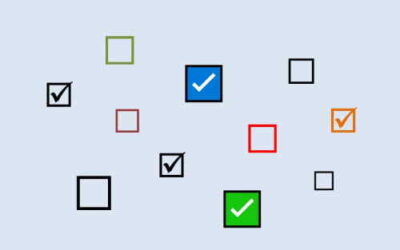Making decisions
Meetings of industry alliances are about getting decisions made. It is the responsibility of the chair to organize the decision-making process. The role of the chair is to facilitate. The chair is not the decision-maker.
Members decide
An industry alliance has members. The members have voting rights in meetings, usually one vote per company. The rules of the alliance determine how decisions are made. It could be by simple majority (more than 50% of the members agree), super-majority (more than 67%) or consensus (100%), depending on the type of decision.
This is different from what most people are used to. In a corporate environment, the chair of the meeting is the boss and the other participants debate and advise. In a meeting of an industry alliance, the chair advises and the participants decide by voting. The chair is a facilitator, the chair is not the boss.
Organizing a decision
The purpose of the meeting is to make a decision. The members can only make a meaningful decision when they understand the problem and the consequences of the decision. And the best way to get a common understanding is to discuss the problem and potential solutions in a meeting.
This is when the role of a chair becomes interesting. The chair has two conflicting goals now: (1) to get a decision made as quickly as possible, and (2) make sure that the members understand the problem and the possible solutions.
Discussions can take forever. Members who disagree with a proposed decision can ask for additional investigations, for more detailed facts, or challenge the validity of an analysis.
The chair needs to know when to end the debate and start a vote. The decision could be sub-optimal and members frustrated when the vote is done too early. But precious time is lost when the discussions drag on and the vote is delayed.
When is the group ready to make a decision?
Consensus is not always possible. When participants disagree it could be that they don’t have the same understanding about the facts and the problem. In that case it can make sense to continue the debate. It could also be that members disagree because they have different business interests. In that case, more discussion is unlikely to result in a change of opinion.
The chair needs to feel what is preventing consensus, lack of understanding or conflicting business interests.
In my experience, chairs usually wait longer then necessary with starting a vote. It is more comfortable to wait for consensus. It is quite common that, when the vote is finally done, the chair discovers that the people who objected are a small but vocal minority.
It can also be inefficient to wait until everyone understands the problem and solution. What do you do when one of the companies sends a new representative who has not been briefed and starts to question aspects that have been discussed in previous meetings?
A good reason to delay the vote is when the chair believes that the result of a vote is going to be close. It is usually a sign that the problem and solution are not properly understood when almost the same number of participants are in favor and against the proposed decision.
It is not easy to chair an alliance meeting.
Making efficient decisions
A good chair can speed up the process.
Before the a topic is discussed in the meeting, the chair should:
- Explain the problem to be solved and the requirements for the solution
- Explain where the group is in the decision making process. What the group has done before. What must be achieved in this meeting. And what the next step is in the process.
- Set time limits for the debate
Before starting the vote, the chair should:
- Present the text of the proposed decision, in writing.
- Explain the consequences of the vote. What happens when the proposed decision is accepted or rejected. Or, in the case the decision is between multiple options, what the consequences are for each option.
Don’t participate in the debate
The chair will lose the possibility to control time when he or she participates in the debate. How can you stop the discussion when someone disagrees with what you said? A chair can only control time when the chair’s contribution is limited to the meeting process.
The chair is often one of the company representatives, elected by the members to be the chair of the meeting. That makes it hard to stay out of the debate when your company’s interests are at stake.
Ideally, the chair asks another representative of their company to argue the company’s position in the meeting. That makes it easier to stay in the facilitator role.
I have also seen people switch between chair role and company-role by announcing the switch to the participants. Even put on a special hat in the chair role and taking it off when participating in the company role. Very hard to do.
What if a member doesn’t agree with the chair?
Members may not agree with starting a vote, or disagree with the text of the decision.
Such a challenge needs to be addressed immediately by asking the participants in the meeting if they agree with the chair or with the challenger. This is itself a vote.
Other types of meetings
Meetings don’t have to be about making a decision. The goal of a meeting can also be to provide information, or to get feedback on proposal. In such a meeting, someone presents the information followed by a Q&A session with the audience. The role of the chair in these meetings is minimal.
Further reading
The article “How To Run a Meeting“, by Antony Jay in the Harvard Business Review, covers different types of meetings, the preparation of the meeting agenda, and responsibility of the chair in more detail. The article was written in 1976 but doesn’t feel obsolete, except for the use of “chairman” instead of a gender-neutral alternative like “chair”. Highly recommended.
The article “Guide for voting in meetings of industry groups” explains the role of the chair in making the most common voting procedures work.
The article “The Psychology of Meeting Rooms” explains that the layout of a meeting room determines how participants interact and how they understand the role of chair.
The article “Guide to facilitate multi-party negotiations between companies” has useful tips for the meeting chair because alliance meetings are a form multi-party negotiation.
Picture of the chairman of the “Katholiek Diocese Middenstandsbond”, November 1955. Courtesy Brabants Historisch Informatie Centrum




